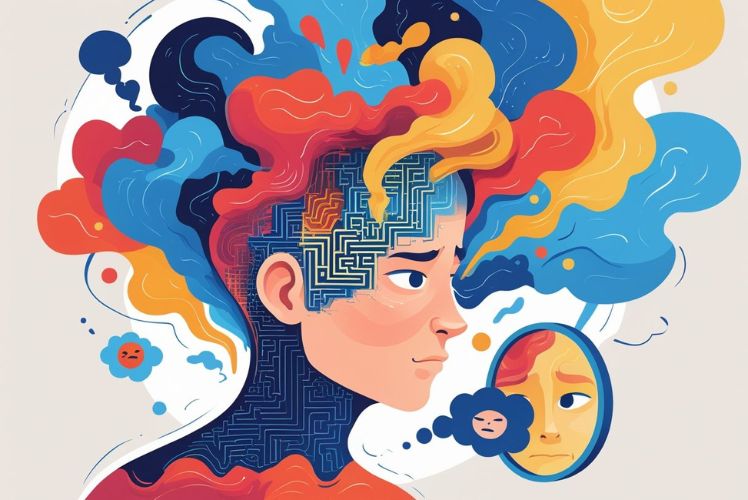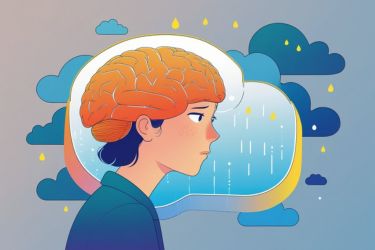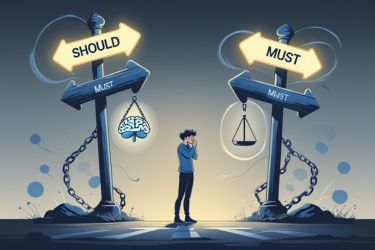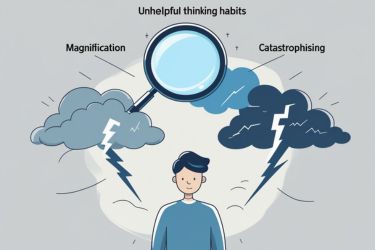Emotional reasoning can deeply affect how we view ourselves and the world around us. It occurs when we believe our feelings dictate reality, leading us to make judgments based on emotions rather than facts. Understanding this unhelpful thinking style is crucial for our mental health, as it can cause negative patterns that impact our mood and behaviour.

Many of us share experiences where we assume that feeling anxious must mean something bad is about to happen. These cognitive distortions can cloud our judgement and lead to increased stress and anxiety. By recognising these patterns, we can begin to shift our thinking towards a more balanced perspective that considers evidence over feelings.
As we explore emotional reasoning further, we will uncover its effects on our mental health and provide tools to challenge and change these unhelpful thinking habits. The journey to understanding our emotions can lead us to healthier, clearer thought processes.
Key Takeaways
- Emotional reasoning influences how we interpret our feelings and experiences.
- Recognising cognitive distortions can help improve our mental health.
- We can learn to challenge and change unhelpful thinking styles for a better outlook.
Understanding Emotional Reasoning

Emotional reasoning is a common cognitive distortion that influences how we interpret situations based on our feelings. We often allow emotions to dictate our thoughts, leading to misunderstandings and flawed perceptions. This section explains what emotional reasoning is, how it contrasts with rational thinking, and the role emotions play in shaping our thoughts.
Definition and Origins
Emotional reasoning is the process of assuming that our feelings reflect reality. For example, if we feel anxious about a situation, we may conclude that danger is present. This thinking style can stem from past experiences and cognitive biases, leading us to form habits that distort our view of the world.
We often rely on emotional reasoning in moments of stress or uncertainty. It may originate from learned behaviours or environmental factors. Just as we acquire language, we can also adopt unhelpful thinking styles without being fully aware.
How Emotional Reasoning Differs From Rational Thinking
In rational thinking, we assess situations based on facts and logic. We weigh evidence and consider alternative explanations before reaching conclusions. In contrast, emotional reasoning bypasses this process, relying solely on our feelings.
When we focus on how we feel rather than what is true, we ignore crucial information. For instance, we might think, "I feel worthless, so I must be worthless." This thought distorts our self-image and can affect our interactions with others.
The Role of Emotions in Thought Processes
Emotions play a significant role in how we process information. They can guide our behaviour and influence our decision-making. However, when emotions drive our thoughts unchecked, we may develop cognitive distortions that lead to ineffective coping strategies.
Understanding this interplay helps us recognise when emotions are swaying our judgement. For example, feeling sad might lead us to believe that no one cares about us. This misconception can harm our relationships and self-esteem. By acknowledging the role emotions play, we can work to create a balanced perspective and improve our mental well-being.
Common Unhelpful Thinking Habits and Cognitive Distortions

Unhelpful thinking habits can distort our perception of reality. These cognitive distortions can lead us to negative thoughts and feelings. By understanding these patterns, we can better identify and challenge them in our daily lives.
All-or-Nothing Thinking
All-or-nothing thinking is when we see situations in black-and-white terms, with no middle ground. If we don't achieve our goal perfectly, we might label ourselves as complete failures.
This type of thinking can be harmful. It sets unrealistic standards and creates pressure. We may overlook the nuances in situations and experience unnecessary stress. For example, if we forget one task in a project, we might think we’ve ruined the whole effort.
By recognising this habit, we can start to reframe our thoughts in a more balanced way. Instead of saying “I failed,” we could acknowledge “I did my best, and there’s room for improvement.”
Catastrophising and Magnification
Catastrophising involves imagining the worst possible outcome in any situation. We might think that making one mistake will lead to a disaster. This creates anxiety and fear, affecting our decision-making.
Magnification goes hand in hand with catastrophising. We may blow problems out of proportion, focusing solely on the negative aspects. For instance, if we face criticism, we might believe it means we are unworthy.
To combat these thoughts, we can challenge the exaggerations. Asking ourselves the likelihood of a worst-case scenario occurring can help. Bringing our focus back to reality reduces anxiety and helps us remain level-headed.
Mind Reading and Fortune Telling
With mind reading, we assume we know what others are thinking without any evidence. This belief often leads us to feel rejected or judged. For example, we might think a friend is upset with us, even when they haven’t expressed it.
Fortune telling, on the other hand, is predicting that something bad will happen. We often do this without any real basis. For example, we may think we’ll fail a test before we even begin studying.
Both habits can negatively affect our relationships and self-esteem. A helpful approach is to ask for clarity or practice mindfulness. This way, we can remain grounded and reduce unnecessary stress.
Mental Filtering and Discounting the Positive
Mental filtering is when we focus solely on the negative aspects of a situation while ignoring the positives. For instance, if we receive both praise and criticism, we might fixate on the criticism and forget the praise.
Discounting the positive goes a step further. We may acknowledge good experiences but dismiss them as unimportant. We might think, “That was just luck,” when we achieve something good.
To counteract these filters, we can make a list of positive aspects in our lives. Keeping a gratitude journal can help us remember the good things. By recognising our strengths, we can build a more balanced and optimistic outlook.
Impact of Emotional Reasoning on Mental Health

Emotional reasoning can greatly affect our mental health by distorting how we view ourselves and our situations. It often feeds into negative emotions and thoughts, making us feel trapped in cycles of anxiety and depression. We must explore its impacts on various mental health issues and the consequences it carries.
Anxiety and Depression
For many of us, emotional reasoning is a key factor in anxiety and depression. When we allow our feelings to dictate our thoughts, we might conclude that situations are worse than they actually are.
For example, if we feel anxious about an upcoming event, we might convince ourselves that it will be disastrous, leading to increased stress. Similarly, feelings of sadness can reinforce our belief that we do not deserve happiness, leading to deeper depression.
This cycle of negative thinking can make it harder for us to seek help, as we may feel unworthy of support.
Low Self-Esteem and Negative Self-Image
Emotional reasoning significantly impacts our self-esteem. When we interpret our emotions as facts, we may develop a negative self-image.
If we feel guilty about a mistake, we might see ourselves as failures. This can lead to feelings of worthlessness, which further affects how we interact with others. We may withdraw from social situations or become overly critical of ourselves, reinforcing low self-esteem.
These negative self-perceptions can make it challenging to form healthy relationships and may lead us to avoid new experiences.
Influence on Disorders such as PTSD, Bipolar Disorder, and Eating Disorders
Emotional reasoning can complicate various mental health disorders like PTSD, bipolar disorder, and eating disorders. For instance, those with PTSD might feel intense fear that leads them to avoid reminders of trauma. This avoidance can perpetuate their distress.
In bipolar disorder, emotional reasoning may lead to impulsive decisions during manic phases or feelings of hopelessness during depressive episodes. For individuals with eating disorders, emotional reasoning contributes to distorted body image and unhealthy behaviours tied to self-worth.
Understanding these links helps us recognise how emotional reasoning exacerbates difficulties in mental health, emphasizing the importance of seeking balanced perspectives.
Examples and Manifestations of Emotional Reasoning

Emotional reasoning often leads us to make incorrect conclusions based on our feelings. By exploring some common manifestations, we can better understand how this thinking habit affects our lives.
Personalisation and Labelling
Personalisation occurs when we assume responsibility for events outside our control. For example, if we receive criticism at work, we might think, "This is because I am incompetent." This type of emotional reasoning links our self-worth to external feedback.
Labelling is closely related. We might label ourselves harshly based on our feelings, such as calling ourselves "a failure" after a minor setback. This creates a negative self-image that can influence our behaviours and decisions, making it hard to see our true abilities.
Blaming and Shoulds
Blaming involves putting the weight of our feelings on other people or circumstances. We might think, "I feel sad because my friend did not invite me out." This shifts our focus away from our emotions and gives others undue power over our feelings.
The "should" statements are another common manifestation. We often tell ourselves, "I should be happier" or "I should not feel this way." These statements create pressure and lead to more emotional distress. We may feel guilty or inadequate when we do not meet these rigid expectations.
Jumping to Conclusions and Worst Possible Conclusion
Jumping to conclusions happens when we assume the worst without evidence. For instance, if a friend does not respond to our message quickly, we may think, "They must be angry with me." This type of reasoning can strain relationships and lead to unnecessary worry.
The worst possible conclusion is an extreme form of this thinking. Here, we might take a small setback and inflate it to catastrophic proportions. For example, failing a test can lead us to conclude, "I will never succeed in life." This negative thought pattern hinders our growth and can trap us in a cycle of negativity and anxiety.
Challenging and Changing Unhelpful Thinking Styles
To improve our thinking, we need to recognise when our thoughts do not reflect reality and learn to adjust them. This involves identifying cognitive distortions, employing cognitive-behavioural therapy techniques, and building healthier thinking habits.
Recognising Cognitive Distortions
Cognitive distortions are inaccurate thoughts that can lead to negative feelings. These might include all-or-nothing thinking, overgeneralising, and emotional reasoning. For instance, if we feel anxious about a situation, we might think it will go poorly, even if there is no evidence for this.
To recognise these patterns, we can keep a thought diary. By documenting situations that cause distress and writing down our thoughts, we can start to see how our cognitive biases affect our emotions. This awareness is the first step in challenging our negative thought patterns.
Cognitive-Behavioural Therapy Techniques
Cognitive-behavioural therapy (CBT) offers effective methods for changing our unhelpful thinking styles. One key technique is cognitive restructuring, where we question the validity of our negative thoughts. We can ask ourselves if these thoughts are based on facts or feelings.
Another helpful technique is behavioural activation. This involves engaging in activities that improve our mood. When we step out of our comfort zones and challenge negative thoughts by taking action, we can shift our mindset towards a more positive outlook.
Building Healthier Thinking Habits
Establishing healthier thinking habits takes time and practice. We can start by identifying and replacing negative thoughts with more balanced and realistic alternatives. For instance, instead of thinking "I always fail," we might say, "I have succeeded in the past, and I can learn from my experiences."
Additionally, we should engage in positive self-talk. Affirmations can reinforce a kinder and more supportive internal dialogue. Regular mindfulness practice can also help us observe our thoughts without judgment.
By combining these approaches, we create a robust toolkit for managing and changing our unhelpful thinking styles. Making these changes can lead to improved emotional well-being and more effective coping strategies in our daily lives.
Frequently Asked Questions
In this section, we will answer common questions about emotional reasoning. Understanding how to identify this thinking habit and its effects can help us manage our thoughts better and improve our mental health.
How can one identify emotional reasoning within their thought processes?
We can identify emotional reasoning by observing when our feelings influence our thoughts. For instance, if we feel sad and conclude that things will never get better, we are likely engaging in emotional reasoning. Recognising these patterns helps us question the validity of our thoughts.
What strategies are effective in overcoming emotional reasoning?
Effective strategies include challenging negative thoughts with evidence and reframing our understanding of situations. Practising mindfulness can also help us notice our feelings without letting them dictate our thinking. Writing down thoughts and feelings can keep us grounded and allow for clearer reasoning.
Could you explain the impact of emotional reasoning on mental well-being?
Emotional reasoning can lead to feelings of helplessness and increased anxiety. When we base our beliefs on emotions rather than facts, we may find ourselves stuck in a negative thought cycle. This can affect our ability to cope with stress and impact our relationships.
What are some common examples of emotional reasoning in everyday life?
Common examples include believing we are unlovable after a breakup or feeling like a failure after a minor setback at work. When we allow emotions to shape our beliefs about ourselves and our situations, we often arrive at misguided conclusions.
How does emotional reasoning differ from other unhelpful thinking habits?
Emotional reasoning differs because it specifically involves letting emotions dictate our perceptions. Other unhelpful thinking habits, like all-or-nothing thinking, may not directly rely on feelings. Recognising this difference helps us target emotional reasoning specifically for improvement.
What role does emotional reasoning play in anxiety and depression?
Emotional reasoning often exacerbates anxiety and depression. It can create a cycle where negative feelings lead to pessimistic thoughts, which in turn increase distress. By breaking this cycle, we can find healthier ways to manage our emotions and thoughts.




















